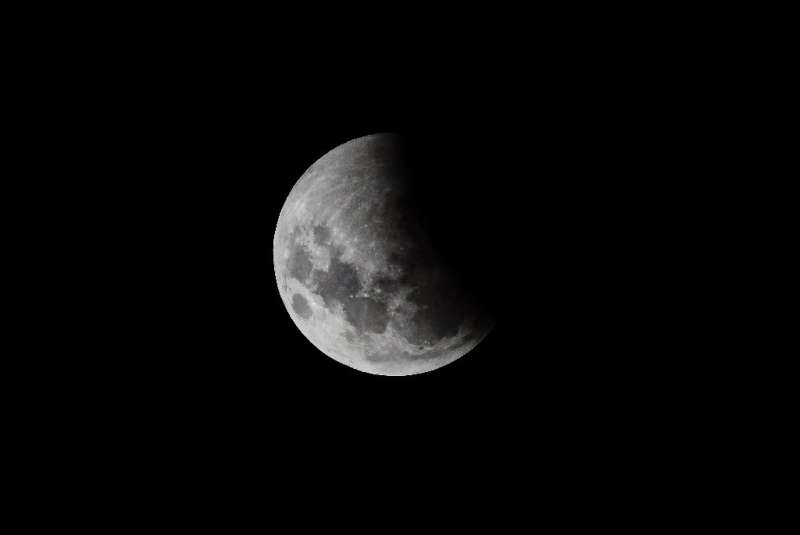
The longest partial lunar eclipse in nearly 600 years, which will bathe the Moon in red, will be visible Thursday and Friday for a big slice of humanity.
The celestial show will see the Moon almost completely cast in shadow as it moves behind the Earth, reddening 99 percent of its face.
The spectacle will be visible for all of North America, as well as parts of South America, Polynesia, Australia and northeast Asia.
Space scientists say sky-watchers in those parts who are blessed with a cloud-free view will see a slight dimming of the Moon from 0602 GMT Friday as it enters Earth's penumbra—the outer shadow.
An hour later it will appear as if someone has taken a giant bite out of the lunar disc as it starts to pass into the umbra—the full shadow.
By 0845 GMT the Moon will appear red, with the most vivid coloring visible at peak eclipse 18 minutes later.
The whole process then goes into reverse as the Moon slithers out of shadow and carries on its endless journey around our planet.
The dramatic red is caused by a phenomenon known as "Rayleigh scattering", where the shorter blue lightwaves from the Sun are dispersed by particles in the Earth's atmosphere.
Red lightwaves, which are longer, pass easily through these particles.
"The more dust or clouds in Earth's atmosphere during the eclipse, the redder the Moon will appear," a NASA website explains.
"It's as if all the world's sunrises and sunsets are projected onto the Moon."
From the moment the eclipse proper begins—when the Moon enters the Earth's shadow—to when it ends will take more than three hours and 28 minutes.
That is the longest partial eclipse since 1440—around the time Johannes Gutenberg invented his printing press—and won't be beaten until the far-off future of 2669.
The good news for Moonwatchers, however, is that they won't have to wait that long for another show—there will be a longer total lunar eclipse on November 8 next year, NASA says.
And even better news for anyone wanting to watch is that no special equipment is necessary, unlike for solar eclipses.
Binoculars, telescopes or the naked eye will give a decent view of the spectacle—as long as the weather here on Earth plays ball.
© 2021 AFP
Citation: Moon lighting: partial lunar eclipse to be longest since 1440 (2021, November 18) retrieved 18 November 2021 from https://phys.org/news/2021-11-moon-partial-lunar-eclipse-longest.html
This document is subject to copyright. Apart from any fair dealing for the purpose of private study or research, no part may be reproduced without the written permission. The content is provided for information purposes only.
https://news.google.com/__i/rss/rd/articles/CBMiRWh0dHBzOi8vcGh5cy5vcmcvbmV3cy8yMDIxLTExLW1vb24tcGFydGlhbC1sdW5hci1lY2xpcHNlLWxvbmdlc3QuaHRtbNIBRGh0dHBzOi8vcGh5cy5vcmcvbmV3cy8yMDIxLTExLW1vb24tcGFydGlhbC1sdW5hci1lY2xpcHNlLWxvbmdlc3QuYW1w?oc=5
2021-11-18 21:29:18Z
1136859829
Tidak ada komentar:
Posting Komentar